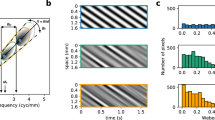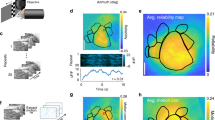Abstract.
Using extracellular recordings and computational modeling, we study the responses of a population of turtle (Pseudemys scripta elegans) retinal ganglion cells to different motion patterns. The onset of motion of a bright bar is signaled by a rise of the population activity that occurs within less than 100 ms. Correspondingly, more complex stimulus movement patterns are reflected by rapid variations of the firing rate of the retinal ganglion cell population. This behavior is reproduced by a computational model that generates ganglion cell activity from the spatio-temporal stimulus pattern using a Wiener model complemented by a non-linear contrast gain control feedback loop responsible for the sharp transients in response to motion onset. This study demonstrates that contrast gain control strongly influences the temporal course of retinal population activity, and thereby plays a major role in the formation of a population code for stimulus movement patterns.
Similar content being viewed by others
Author information
Authors and Affiliations
Additional information
Electronic Publication
Rights and permissions
About this article
Cite this article
Wilke, S.D., Thiel, A., Eurich, C.W. et al. Population coding of motion patterns in the early visual system. J Comp Physiol A 187, 549–558 (2001). https://doi.org/10.1007/s003590100227
Accepted:
Issue Date:
DOI: https://doi.org/10.1007/s003590100227




